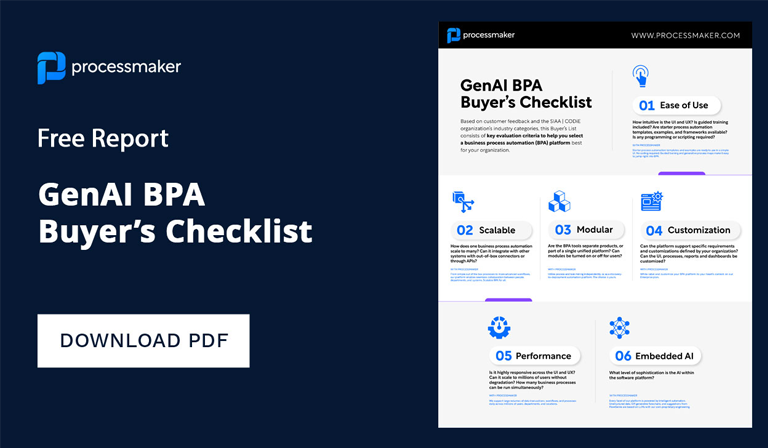For years, chatbots have been changing the way brands interact with customers. Though only little by little as their not always positive image kept bots on the periphery of go-to digital solutions. However, in 2020, the impact of the pandemic rolled over the mistrust in new technologies and stalling digitalization strategies and put chatbots into the spotlight. When call centers shut down across the world and markets were turned upside down, companies were forced to look for alternative ways to deal with the tsunamis of questions, requests and insecurities…
Chatbot solutions stood up to the challenge and, in a matter of months, turned from outsiders to heroes. The internet soared with news of private businesses, NGOs and even governmental organizations using chatbots to tackle the crisis, opening, once again, the debate on the possible benefits of chatbots and its effects on customer experience.
And so, this article will explore different ways to leverage conversational assistants on a quest for better experience across the entire customer journey.
What is a Chatbot?
By definition, a chatbot is a software that communicates with users via a conversational interface be it textual or voice based. While most people associate bots with AI, they do not necessarily need to use AI to be helpful and functional. Therefore, besides different modalities (text and voice), we can differentiate between two kinds of bots:
Rule-based bots use a decision-tree-like conversational flow and offer more structured experience as the user is guided down one of the predetermined paths. They use features such as keyword recognition, conditional logic, excel-like calculations and formulas or rich interface elements such as buttons, carousels and videos to create complex and sophisticated experiences.
NLP-based bots (AI) rely on language processing technology to analyze natural user inputs giving users more flexibility as the user can jump from question to question freely. NLP bots may but don’t have to, necessarily, use machine learning (ML) which gives the bots power to learn from their own experience without human interference.
There is no better or worse between these two types of bots. The question of what’s right needs to be answered by your needs and use case. In many cases, rule-based bots perform better as people often like a little bit of structure. Combining NLP with rule-based and visual UI elements is also becoming popular.
In the past, bots used to be exclusive to developers and so big companies with lots of resources. However, the no-code movement which has been growing in popularity in past few years made conversational assistants much more accessible. The question of how to make a chatbot is no longer a question of coding but more a question of conversational design and application. Thanks to the visual bot builders, these types of platforms lowered the time and cost of development opening doors to small and medium businesses as well as marketers.
So, how can chatbots improve CX?
1. Smoother Customer Journey
CX really comes down to improving the interaction at the various touch points across the customer journey. So, first and foremost, a chatbot can significantly ease the purchase process. Within this section of the journey, there are two touch points in particular which bots can impact significantly: awareness and evaluation stage.
During the awareness stage, your potential customer is only getting to know you. It’s his or hers first time navigating your site and might have doubts and questions that need answering. Instead of forcing the user to go and seek out the FAQ section thus interrupting their experience, a bot can act as a friendly “search bar”; the shop assistant that sits you down on a comfy sofa and brings the products and information to you. It can provide the customer with basic information about your brand, articles, videos, product suggestions, products curated based on user preference…
When it comes to the evaluation stage, it’s important to note that in this day and age, price is no longer the main deciding factor. It’s the level of personalization and quality of experience. For instance, according to study conducted by PwC, 43% of all shoppers are willing to pay more for greater convenience and 42% are willing to pay more for a friendly, welcoming experience.
If, thanks to your bot assistant, the user avoided frustrations, discovered a more relevant product, found all the information on the spot, it can tip the scale in your favor significantly.
2. Real-Time Personalization
Speaking of personalization in customer experience. The second benefit that bots bring to the table is its ability to personalize customer experience in real-time. In other words, whatever information the customer provides within the context of the conversation (or several conversations), the bot can leverage instantly. This ability goes way beyond just calling the user by his or her name.
Personalization happens thanks to integrations. Modern bots can integrate with pretty much any tool either using an API or, even better, an out of the box integration now offered by most no-code chatbot development platforms. In other words, your bot is able to collect and send the information to any CRM or database you already have and similarly retrieve that information when necessary.
Hence, bots can provide a great deal of continuity by keeping track of returning customers/users, their preferences, past purchases, questions and even complaints.
While a web bot can use IP addresses and cookies to identify returning users, the masters of continuity, in this case, are messaging apps like WhatsApp and Messenger. There, the user account is always associated with a phone number or an email address without requiring a sign up which makes it easier for the bot to draw on past interactions.
3. Less Friction, More Convenience
According to a survey conducted by Helpshift, 94% of over 2,000 respondents dread contacting customer support. Outsourcing support calls to overseas operators or having them handled by the awful automated telephone menus, has done nothing but increase customer anxiety about reaching out… Moreover, the same survey found that many consumers are open to the use of chatbots provided they satisfy specific needs. For example:
- 70% of the respondents said that they would be happy to use chatbots if they could resolve issues without having to call or email;
- 75% said they would use them if they reduced the time needed to resolve issues
- 73% if it reduced the time to get a customer service representative on the phone, etc.
Indeed, the 2019 State of Conversational Marketing report confirms the notion that people are getting more accustomed to the idea of chatbots. Comparing the answers from 2018 with those in 2019, the preference to interact with people is getting lower (from 43% to 38%); and the percentage of people worried about the bot making a mistake also (from 30% to 24%).
Chatbots not only enable customers to get answers to basic queries instantly, they are also excellent in classifying the queries they are unable to resolve and sending them to appropriate agents/departments for resolution. This way, bots are able to eliminate a lot of the needless back and forth, inefficiency of which is the most common cause of frustration.
4. Be Available 24/7
Your live chat customer support team needs to sleep. However, your chatbot doesn’t. A huge amount of queries and transactions take place outside of the official business hours. Customers need a way to receive support when your customer service team is not available.
A website or a messaging app chatbot is able to provide a certain level of support 24/7. Even in the instance when the bot isn’t able to resolve a particular issue, it can still:
- Identify the type and urgency of the issue
- Send the ticket to the right department/agent
- Push it to the top of the queue based on the level of urgency
- Or, help the customer schedule a chat/call during business hours to eliminate feeling of uncertainty
Another study by Helpshift (State of Automation 2019) showed that even if the bot-human assisted queries had a longer average time-to-resolution, they received the highest CSAT scores. This results validates the fact that consumers value efficiency in customer service. In other words, they are happy not to be wasting their time on hold even if the process as a whole is a bit slower.
5. Personify your Brand
The flexible nature of chatbots allows them to engage with consumers on a variety of levels. Besides being able to help with query resolution, provide technical support or guide the sales process, bots have the capacity to convey tone, mood and personality of your brand.
Creating a chatbot persona that represents your brand values, your story and reflects the language (accent/dialect/(in)formality) of your target audience helps humanize your brand and give it a level of authenticity. A bot can be witty and funny; friendly and helpful; snarky and entertaining or polite and intellectual. The right personality is able to engage with your audience on a more personal level, crossing the line of the purely transactional to an emotional relationship. According to a Stackla 2019 survey, 86% of consumers consider authenticity to be a key factor when deciding what brands to support.
6. Collect Actionable Feedback
Feedback collection is integral to any business. Learning about how your customers feel about your product/service as well as the support you offer is essential to success.
Usually the go-to method to collecting customer feedback are surveys and questionnaires. However, they don’t always inspire much engagement as time is precious and attention is the most precious resource these days.
Chatbots, however, are able to remove that dragging “fill-out-a-form” feeling from the equation. They can collect feedback throughout the interaction with the customer while he or she is shopping. All as a natural part of an ongoing conversation. Furthermore, a chatbot can also personalize the survey along the way, adjusting to user responses and so getting more information only on the areas of friction, saving customer time.
A bot on a messaging app can go even further and make the survey seem as a friendly check up on customer well-being and satisfaction. (E.g., “Hi Lesley, I saw you received your order today! What did you think of the unpacking experience?”)
Fresher and more detailed feedback allows you to efficiently:
- Improve your product
- Identify issues in supply-chain
- Refine your support resources such as articles, videos etc.
- Enhance the bot experience itself
To Wrap Things Up…
Chatbots have been gaining more and more traction. Especially since the pandemic put pressure on businesses to digitize their services and workflows.
Use case after use case, the results show that, if done correctly, bots can have a huge positive impact on the quality of customer experience and so, your bottom line. What is your take on the role of chatbots in the evolution of customer experience? Are you ready to create a chatbot?





